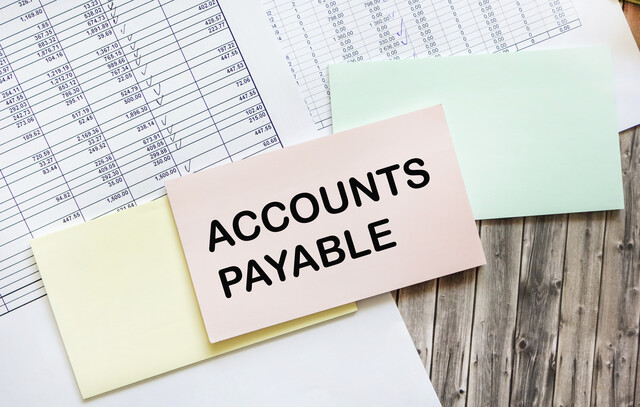Lesson 1. Navigating QuickBooks for Business Success
QuickBooks empowers small businesses to manage their own accounting needs such as invoicing and payroll, potentially reducing the cost of hiring a full-time accountant. This software's user-friendly interface makes it ideal for entrepreneurs unfamiliar with bookkeeping.
Lesson 2. Mastering QuickBooks: Comprehensive Setup and Configuration
Before using QuickBooks, prepare by collecting necessary financial information and choosing a conversion date, ideally at the beginning of a year. Once installed, use the EasyStep Interview or Express Start for detailed setup, ensuring accuracy in your records.
Lesson 3. Understanding QuickBooks: From Home Page to Advanced Insights
Dynamic interface capabilities like resizing dropdown lists and columns are highlighted to enhance content visibility and improve user interaction, adapting layouts to individual preferences. Users can also switch effortlessly between windows or opt for a streamlined single-window view to focus on specific tasks without distraction.
Lesson 4. Understanding and Utilizing QuickBooks' Chart of Accounts
Customizing a Chart of Accounts in QuickBooks can provide visibility into a business's financial activities through organized account categories. By integrating features such as account names and numbers, businesses can further simplify bookkeeping and financial analysis.
Lesson 5. Streamlining Business Operations: QuickBooks Lists
Setting up customers and jobs in QuickBooks involves creating detailed profiles, which streamline transactional processes like invoicing and estimates. The software's customizable features allow for precise categorization of customer types and addition of unique customer fields, accommodating diverse business models and operations.
Lesson 6. Streamlining Business Transactions with QuickBooks Items
Organizing a business's offerings in QuickBooks is streamlined through its Item List feature, which aptly categorizes anything that impacts financial records, such as inventory, services, and sales tax. A proficient setup includes specifying item-specific attributes like cost, sales price, tax, and account allocation, enabling precise financial management.
Lesson 7. How to Organize and Create QuickBooks Lists
This QuickBooks lesson covers the creation of essential lists like Fixed Asset, Price Level, Sales Tax Code, and Class lists, which are crucial for efficient financial management. By setting up these lists, users can easily track assets, pricing, taxes, and departmental transactions, enhancing the program's functionality.
Lesson 8. Enter, Track, and Pay: A Guide to QuickBooks Expenses
Adopting the accrual-basis accounting system offers the benefit of delaying payments, enhancing tracking, and ensuring transparent financial accounting in QuickBooks.
Lesson 9. Mastering the Essentials: Handling Bills, Deposits, and Credits in QuickBooks
Learn to proficiently manage your organization's financial transactions in QuickBooks by entering, deleting, and tracking bills, as well as handling deposits and credits. Master Bill Tracker, automated discounts, and reimbursable expenses to streamline your accounts payable processes.
Lesson 10. Mastering Invoice Creation with QuickBooks: A Comprehensive Guide
Credit memos in QuickBooks assist in correcting invoicing errors and issuing refunds, functioning similarly to invoices for adjusting balances but without affecting financial records automatically. The decision on whether to issue credits, refunds, or apply memos to invoices is prompt-based.
Lesson 11. Consignment Sales and Prepayment Management Made Easy
Learn how QuickBooks facilitates invoices customization for consignment sales, enabling smart tracking of financial liabilities and income from commission efficiently. The lesson also unveils useful tactics for managing customer prepayments and handling backorders, enhancing transactional accuracy.
Lesson 12. Mastering QuickBooks: Essential Skills for Time and Mileage Tracking
QuickBooks assists in tracking billable hours and mileage for businesses charging beyond product sales. It simplifies creating invoices, managing time entries, and producing relevant reports.
Lesson 13. The Art of Producing Customer Statements with Precision
Statements provide customers with a record of all transactions, resembling a bank statement, and can be customized in QuickBooks for frequency and mailing preferences. The process involves setting preferences, creating charges, preparing statements, and choosing methods for sending or printing them.
Lesson 14. Efficiently Track and Apply Payments with QuickBooks
Streamlining financial processes, QuickBooks supports businesses by differentiating between sales receipts and invoices, maintaining precision in accounts receivable and cash handling. It enhances customer payment tracking through tools like Income Tracker and allows straightforward finance charge assessments and credit applications.
Lesson 15. QuickBooks: Handling Customer and Non-Customer Deposits
Navigating QuickBooks involves understanding its nuanced approach to bank and credit card account management, enhancing financial reconciliation accuracy. Through features like deposit and NSF tracking, businesses can maintain robust financial health and ensure clarity in their accounting practice.
Lesson 16. Tracking and Managing Business Loans: A QuickBooks Approach
Maintaining control over business finances involves careful monitoring of loans and associated purchases through QuickBooks. Amortization schedules and account setups streamline the process, allowing for efficient financial reporting.
Lesson 17. Streamlining Payroll: QuickBooks Solutions
Payroll management can be a significant challenge, often leading business owners to consider outsourcing; however, QuickBooks offers a DIY approach, albeit with an added cost. Successfully navigating QuickBooks for payroll requires careful setup, including securing necessary IDs and consistently updating software to ensure compliance.
Lesson 18. Journal Entries Explained: A Quick Start Guide
While QuickBooks automates many accounting processes, comprehending journal entries enables users to manually adjust accounts to set balances, reassign funds, and record transactions accurately, maintaining the integrity of financial data. This manual entry process is critical for tasks such as depreciating assets, correcting errors, or confirming journal entries against reports.
Lesson 19. Swift Reconciliation: Handling Unreconciled Transactions
Creating an accountant's review copy in QuickBooks entails setting a dividing date for transactional access, allowing accountants to make necessary adjustments. This copy facilitates seamless collaboration and incorporation of changes back into your original file.
Lesson 20. Utilizing QuickBooks: Entering and Safeguarding Company Data
QuickBooks users must ensure data protection by backing up files regularly and switching to single-user mode for specific maintenance tasks. Verifying and condensing data are crucial to prevent and resolve issues, while portable company files enable data sharing externally.
Lesson 21. From Purchase to Inventory: Mastering QuickBooks Tracking
In QuickBooks, inventory items refer to products bought for resale, necessitating accurate recording of all purchases, including those without purchase orders via methods like the Write Checks window for over-the-counter buys. Proper setup in the Item List, including categories like tax, COGS, and reorder points, allows for seamless integration into inventory management processes.
Lesson 22. QuickBooks Sales Tax Setup and Payment Process
Running sales tax reports in QuickBooks enables businesses to view collected taxes, assess liabilities, and prepare for timely payments. This functionality is crucial for complying with regulatory requirements and ensuring accurate financial oversight in sales tax management.
Lesson 23. QuickBooks Budget Setup: An In-Depth Tutorial for Beginners
QuickBooks allows users to create customized budgets using previous fiscal data to manage finances better. Its tools for budgeting and forecasting aid in tracking income, expenses, and cash flow projections.
Lesson 24. QuickBooks Reports: Categories and Customization
Discover and master QuickBooks' flexible reporting options which are categorized for easy identification, helping users run detailed reports like Vendors or Customer Sales. Customize these reports with various features, such as visual filters and printing or emailing options for seamless business communication.
Lesson 25. Efficient Bank Feeds Setup in QuickBooks
Connecting QuickBooks to online bank accounts enhances financial oversight by facilitating automated downloads of transactions and balances. QuickBooks accommodates direct or Web Connect options, with Express mode providing intuitive transaction matching and renaming features.

14 Hours average completion time
1.4 CEUs
25 Lessons
51 Exams & Assignments
725 Discussions
25 Videos
60 Reference Files
284 Articles
Mobile Friendly
Last Updated November 2025
























